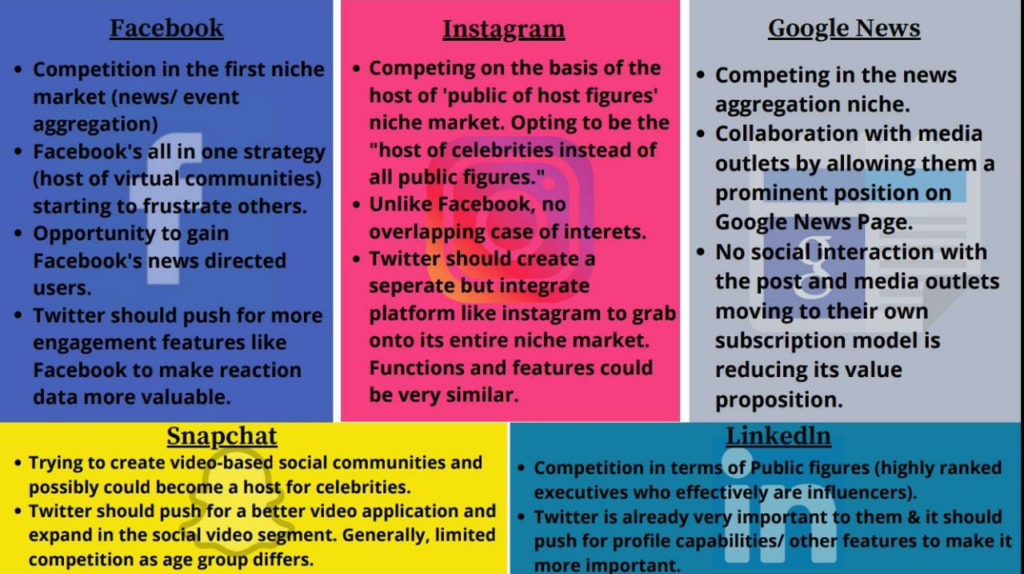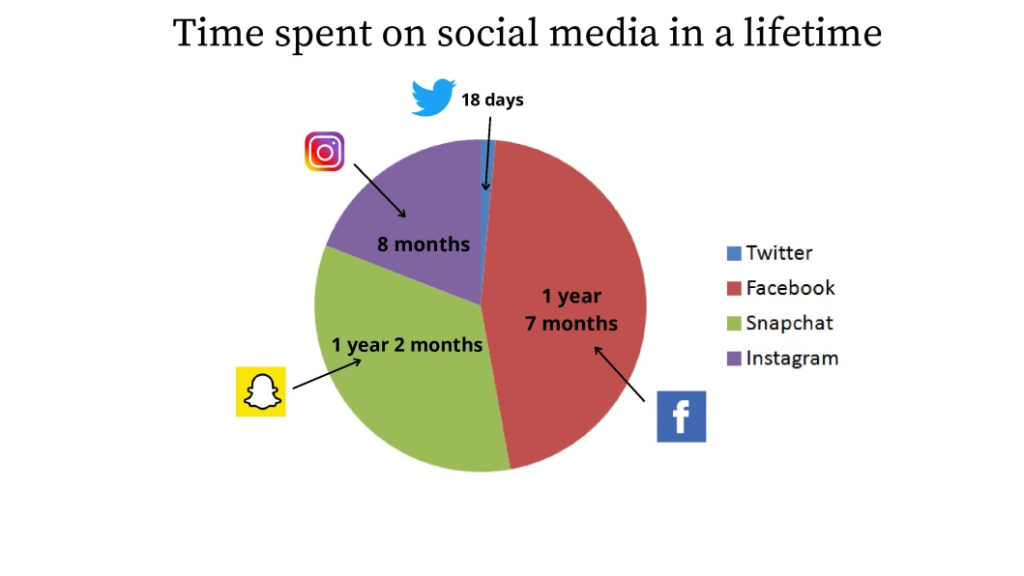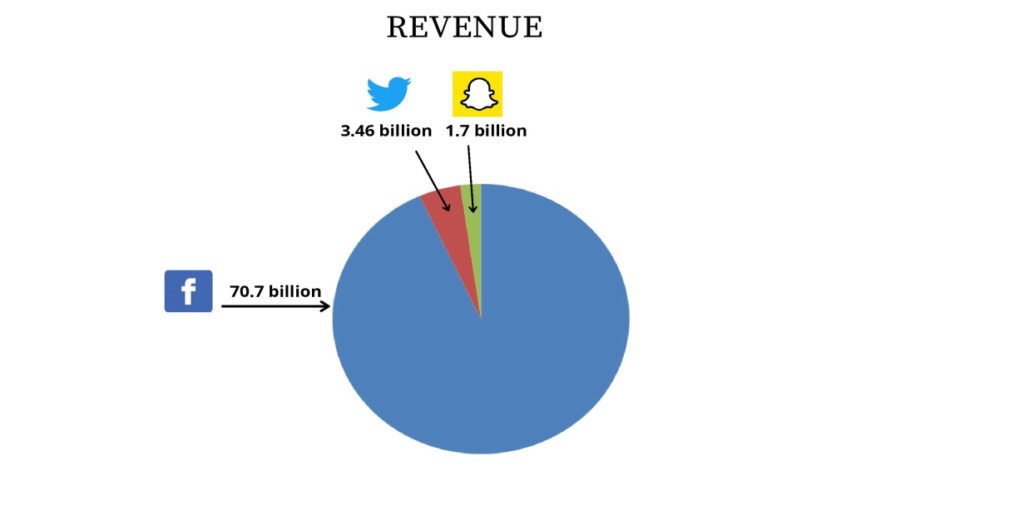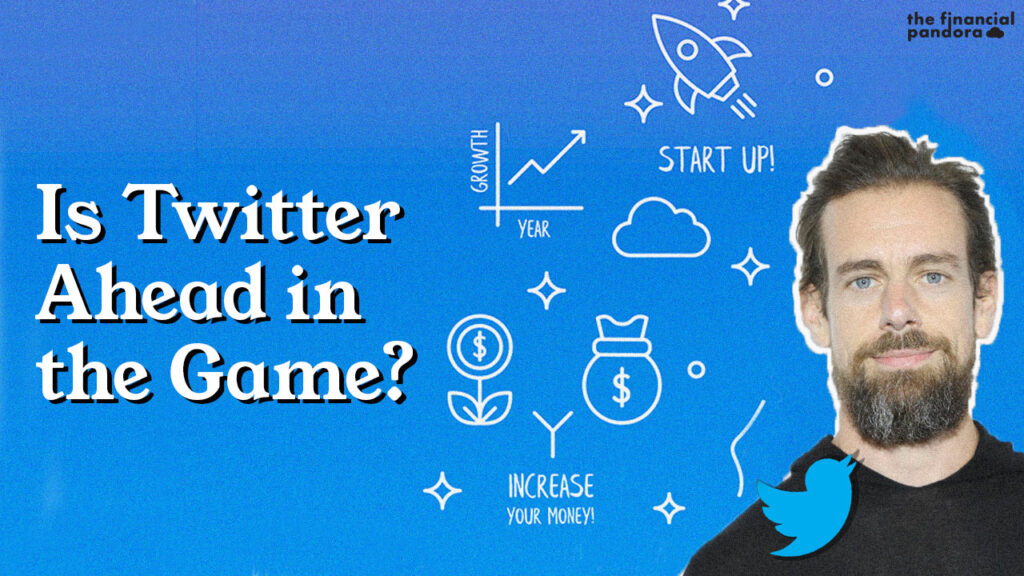During this ongoing pandemic and the lockdown, the only thing that could keep everybody at the edge of their seats filled with mystery and anxiety is the nationwide lockdown address of our Hon. Prime Minister, Mr. Narendra Modi. Ever wondered how is this information transmitted?
A simple Tweet!
A simple tweet had the power to keep the country guessing about what’s next that is going to happen!
Maybe there was no integrated host available for public figures across the world to express their opinions and expressions. Twitter fills in that gap perfectly!
Now, let us think about the multiple problems that a common man is facing during this pandemic. One such problem was the cancellation of the refreshing summer travels. What got worse was the hassles that a common man had to face to receive proper communication about the status of their refunds (from travel agents). When direct contact became difficult, a common man could turn to Twitter and each time, and boy did it come to his rescue! What if one bad response goes viral? All the years of hard-earned reputation go down the drain with that single tweet. That is the power a single Tweet could have!
Trading at $35.40 a share, Twitter Inc (TWTR) has been a revelation in the social media space purely for the informational gap that the company has managed to fill. But, do we know everything about the company?
Tweet! Tweet!
This article is going to be replete with a whirlwind of facts about Twitter!
What Does Twitter Do?
Flip back a couple of decades, where the mode of communication ran into days for it to be completed! Letters were written, posted, delivered, and replied. Turn again to 2020, and all of this happens in seconds! That is the power of technology. The birth of social media and its rampant spread has compelled us to believe that it’s indeed, a really small world! Social media has created a world of virtual communities and networks. This has undeniably changed the way how information and communication are transmitted.
Twitter is one of the pioneers of this revelation but before we term it as social media application just like Facebook, Snapchat or Instagram, let’s deep dive into Twitter’s annual report for more clarity:
“Twitter is what’s happening in the world and what people are talking about right now. From breaking news and entertainment to sports, politics, and everyday interests. Twitter shows every side of the story. On Twitter, you can join the open conversations and watch highlights, clips, or live-streaming events. Twitter is available in more than 40 languages around the world. The services can be accessed by Twitter.com, an array of mobile devices via Twitter-owned and operated mobile applications (e.g. Twitter for iPhone and Twitter for Android), and S.M.S.”
With reference to the aforementioned extract, there is one interesting thing that can be highlighted i.e. news and the speed with which it is delivered! It does not mention about correspondingly creating virtual communities that Facebook aims to create.
Twitter is aiming to position itself as an intermediary. The platform facilitates the transfer of information by integrating multiple sources and by allowing social media interactions to take place without really creating social communities. At its core, it is no different than an Alibaba or an eBay. Both these platforms are involved in the facilitation of another form of interaction, i.e. trading. In simple words, Twitter is a classic platform that facilities aggregation of content and news and collects social responses cornering to that content/news, and just like Alibaba/eBay, it sells the cumulated data to marketers directly or indirectly.
Twitter in particular is currently looking to be an aggregator of news and live events and a host of public figures (celebrities, politicians, CEOs, and so on). This niche paints Twitter into a completely different segment than other social media applications. As mentioned earlier, it is not trying to facilitate the creation of social communities (Facebook) nor the formulation of social networks (LinkedIn). It is leaning towards an “aggregation platform” – aggregating news and events into one place, where users can react to a multitude of sources.
The Competing Ground:
Imagine yourself as a newly incorporated startup under the business segment of health and fitness. A social media marketing budget has been set. As a marketer, you are looking out for options as to which social media platform to prefer. This is where the competition steps in! Even though all of these companies are different with their own unique way, their revenue model drags them down to one common playground. The playground for advertising! All of these platforms in every different manner possible have set up a base of daily active users and these in turn are the virtual footfall behind which the marketers and the money flow in. Twitter’s business model is no different (revenue model will be discussed in detail later on) and hence there might be some common ground against which it fights against the remaining social media companies for the common pie of advertising.
Let’s take a look at the image below for a clearer understanding about which of the two niche (intermediary and host of public figures) does the social media applications pose a threat to Twitter:

The above image largely highlights the biggest competitions that Twitter faces in its advertising battle. Concerning for the above image, we could also possibly point out that there is no such company that could pose an immediate threat to Twitter in terms of stealing their users away.
But the threat does not seem too far away!
Competing For Every Inch:
For over years, since the IPO of Twitter, the company has failed to ensure that there is a positive stream of cashflow coming into the business. While Twitter was struggling to define its value proposition and the platform, companies like Facebook were fattening their margins. Jack Dorsey missed that bus. It was a crucial battle that Twitter subsequently lost to all of its competitors. The warzone has biggies like Facebook, Google, Microsoft and Apple competing for some or the other space currently controlled by Twitter. All of these companies have truckloads of money and can flex their monetary strength with great ease without having much effect on their bottom line. Twitter does not have this luxury!
Facebook has recently invested a lot into live streaming of sports events. Hence, it will be hard for Twitter to maintain their mission of being the world’s main host of “live-events”. Besides this, Twitter has also started to lose some ground to Google for the news aggregation business. The “Subscribe with Google” feature allows any user to sign up for a subscription for any particular website directly through their google account. There would be no hassles to fill details and the necessary information will be directly taken out of Google account itself. This will allow the user to manage all of his subscriptions from Google and hence this allows Google to strengthen its relationship with the media companies. The real problem does not arrive at Google being a subscription aggregator. This market can be easily tapped if Twitter’s platform allows the media groups to have an important and customizable presence (just like Bloomberg’s Tictoc). The real risk runs into Google challenging the news aggregation niche of Twitter which is done by integrating the subscriptions with its network.
To explain in simpler words, if you have bought a subscription of ET Prime through Google, it will be directly be linked to Google search and Google news. If one would search about “weekly analysis of the market”, then it would first show the relevant news articles from ET Prime and then one could be able to see all the standard results.
Technology moves fast but it has been observed that Twitter has not be receptive to changes that are demanded by the pace with which competitors are moving and evolving. It needs to address to the niche that it aims to hold onto and make sure media groups and content creators could customize their presence on Twitter just as Bloomberg.
If Twitter faces such fierce competition without rampant changes within its ecosystem, how has it been able to survive?
Perception plays a really important role to position an application in the mind of a user. Had Twitter been perceived as a need-based application, its existence would have been crushed by the giants of the industry. Users who would have wanted to stay informed about news pieces (local/world) would more likely engage with news aggregation technology. The ones who wanted to engage into professional/ non-professional networking could have covered the same through LinkedIn/ Facebook. The reason why this company has managed to survive such intense competition and still be one of the top ten social media companies is due to its perception that portrays itself as a leisure product!
Twitter is a “trendy” platform. It has been able to create a social arena based on the context which is acceptable by a majority of its users which in turn makes the content piece “trending”. Twitter gives a medium to talk about such contents daily and thus can keep its users glued to the platform. The power of the trend can be verified by the fact that the retweet button of Twitter is the second most popular button after the Facebook’s share button (even above LinkedIn and Google’s buttons).
Before, we understand the sustainability of Twitter concerning its competition. Let us actually have a look into its revenue model and then co-relate that with the opportunity that could be knocking on the doors of Twitter Inc.
Now let’s dive in and understand the revenue model for Twitter Inc:
I. Advertising: Almost 87% of Twitter’s revenue comes from advertising sales. Twitter annual revenue from ads came out to be around US$ 2993 million in 2019. Twitter charges the advertisers based on the amount of interaction that the tweets generate. While the budget is set at the beginning of the campaign itself, the advertisers pay on per-click or per-retweet basis. An individual or company can advertise on Twitter by either:
i. Promoting a tweet that will appear in people’s timelines:

ii. Promoting an entire account:

iii. Promoting a particular trend i.e. a hash tag-driven topic that is popular at a particular time.

There is no doubt about the fact that the digital ads market for the social media companies is going to grow enormously in the years to come. The growth in the industry makes it favorable for a company like Twitter. Growing industries might have growing competition too but each company in contention will have an opportunity to grab the ever increasing pie of revenues. Survival would have been much harder if the company was operating in an industry which is shrinking or is saturated.

The above image clearly shows that while the spending over traditional media has been decreasing very minutely, there is an exponential increase in the spending over digital ads. To strength the context even further, the average worldwide spends on the digital ads has increased from 23.5% (25.5% in the USA) in 2013 to 38.3% (39.6% in the USA) in 2019 (Source: eMarketer). The likes of the United Kingdom and China reflect more than 58% of digital ad spends which states that there is a tremendous scope of development ahead.

When we break down the digital advertising spending, we can even see the growth in spending over social media applications as a medium of promotion and brand engagement. Interestingly enough, social media are currently not getting the largest piece from the digital ads pie. Hence, the scope for advertising over a platform like Twitter is humungous and should be tapped in constructively.
It will be really interesting to know within the social media companies, which are the ones which are already liked a lot by the marketers. This will give an insight into how social media spending is going to happen in the future and if the actuals are in line with the forecast then who could become the biggest beneficiary!

According to the above-mentioned graph, Twitter tends to attract and appeal to Business-to-Business (B2B) marketers. When you look at the hindsight, the attraction of B2B marketers is a positive for the company because it indicates they consider Twitter’s user base as “Professional” but on the flip side the total ad spending is quite lower in the B2C segment when we compare it with the B2B segment. Hence, Twitter should devise a strategy to increase the tractions from the B2B segment too while going forward.
II. Data Licensing/Firehose:
Twitter sells its public data that it calls “Firehose” and that quantifies to around 500 million tweets each day to various companies. Companies can make use of this data to analyse consumer trends and generate insights about brands and companies. Since the tweets are public, consumers can also access this data. Because of the volume of the data, companies can learn about their users in a detailed manner, something that a normal user would not be able to.
When we look at it from a different perspective it seems like the marketer is buying the results of the polls that were carried out by Twitter. There is also another aspect to this. The company also collects reactions of user data and then sorts out the data into something meaningful for the marketers.

As can be seen from the image above, there is a continuous growth in data licensing services. However, the addition of multiple reaction options can refine and improve the quality of the data that could be licensed to the marketers and in turn could prove to be even more beneficial in the long run with concerning for to the same.
Ramp Up The User Base!
Almost every one of us has an Instagram account right? We scroll through the content posted by the people whom we follow but in between several such contents, some sponsored posts come our way. Some of us like the sponsored post and we in turn decide to open up the same and check what’s there in it. In turn, we end up spending our valuable time to each of these sponsored posts that we like. That is the freemium model that the social media companies try to sell to us!
So either you end up giving your time to watch a promoted video on YouTube before the actual video starts or take YouTube premium, the choice is ours! The same goes with Instagram or Twitter too. We end up investing our time on so many of such promoted or sponsored content apart from the basic contents posted by our friends that it becomes a perfect platform for the marketers to go ahead and advertise their products on such platforms.
Think about the health and fitness startup example once again. As a company that is aiming to start, where would you aim to market?
The platform where the largest amount of coverage can be achieved right?
The below image is the exact analysis for the same:


The above image largely explains the whole story. Any marketer would wish to advertise on a platform wherein the viewers are spending the most valuable minutes of their life. The platform which has the most number of time spent by a particular user base ultimately can command the premium and can grab the eyes of the marketers. With reference to the above pie chart, one could see that when compared to Facebook’s gigantic numbers, Twitter seems a toddler. The same could be reflected in the financial statements too. Twitter’s total revenue is just 4.89% of that of Facebook’s. Given the fact that the industry has companies that are poles apart in terms of the time spent on the platform and also the revenue numbers, it seems that Twitter has a lot of groundwork to do to catch up with giants of Facebook or Google. This should translate into the acute differences in terms of the numbers of users too.

The number of daily users using Twitter is only around 9.17% of the daily users of Facebook (standalone). This will ultimately reflect within the profitability numbers too. Twitter has to grow organically and has to keep on aggressively adding new user base on to its platform.
Given that we earlier pointed out that Twitter is a kind of leisure-based platform and not a need-based platform for its users, the most important point of consideration will be the user experience. The users should find the platform really interactive and better than the other social media platforms available. This could create a ripple effect in terms of increasing user base which will in turn reflect in the top line of the company’s financial statements.
Summing It Up:
Twitter is a unique model and is kind of different than its competitors with whom they are fighting purely because all of them have the same revenue model and are predominantly dependent upon advertising as a major revenue driver.
But what do people need for advertising?
A prospective user!
The other applications are more people-oriented and are rigorously coming out with new strategies that could gain them some valuable minutes of each individual’s daily life. We have already highlighted that, but Twitter is more so an aggregator, an intermediary of sorts, who focuses on being the primary source for any breaking any news in front of the world going forward and then in turn collecting the reactions on that information to sell it as a refined data set but Twitter needs to pull up its sock and add more weapons in their armory to fight this increasingly competitive landscape.
The user base needs to increase and the buzz around everyone using this application should be:
“Everything that you want to know about, in an around the world, just jump into Twitter!
But wait, we have not covered everything about the company as yet. Stay tuned with us until we come up with our second article covering about Twitter’s financials, the CEO dilemma, scope of improvement areas and ideas with respect to the same and much more!
Follow Us @




